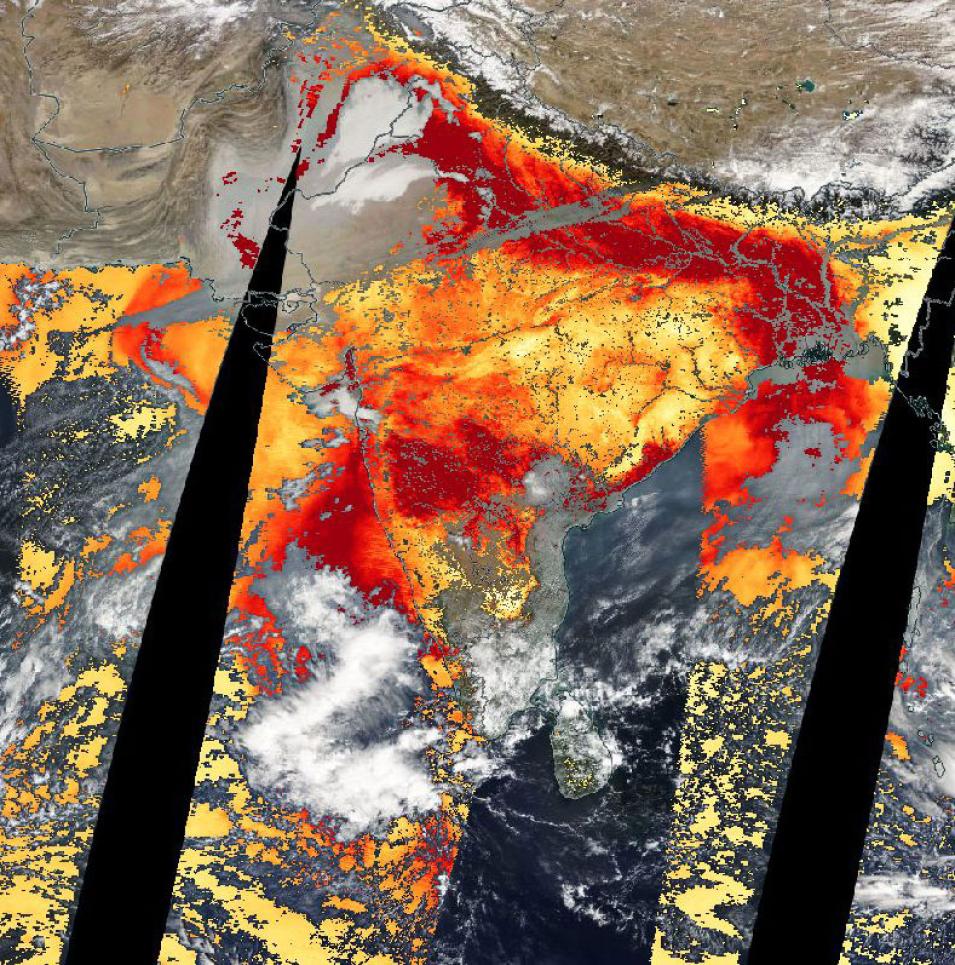Image of high aerosol optical depth over northern India. This image was acquired on 24 December 2018 by the Moderate Resolution Imaging Spectroradiometer (MODIS) instrument, aboard the Terra satellite. High aerosol optical depth with this layer, Aerosol Optical Depth (3km, Land and Ocean), is shown in red.
Aerosol Optical Depth (AOD) (or Aerosol Optical Thickness) indicates the level at which particles in the air (aerosols) prevent light from traveling through the atmosphere. Aerosols scatter and absorb incoming sunlight, which reduces visibility. From an observer on the ground, an AOD of less than 0.1 is “clean” - characteristic of clear blue sky, bright sun and maximum visibility. As AOD increases to 0.5, 1.0, and greater than 3.0, aerosols become so dense that sun is obscured. Sources of aerosols include pollution from factories, smoke from fires, dust from dust storms, sea salt, and volcanic ash and smog.
Aerosols compromise human health when inhaled by people, particularly those with asthma or other respiratory illnesses. Aerosols also have an effect on the weather and climate by cooling or warming the earth, helping or preventing clouds from forming. Since aerosols are difficult to identify when they occur over different types of land surfaces and ocean surfaces, Worldview provides several different types of imagery layers to assist in the identification.
Visit Worldview to visualize near real-time (NRT) imagery from NASA's Earth Observing System Data and Information System (EOSDIS).
